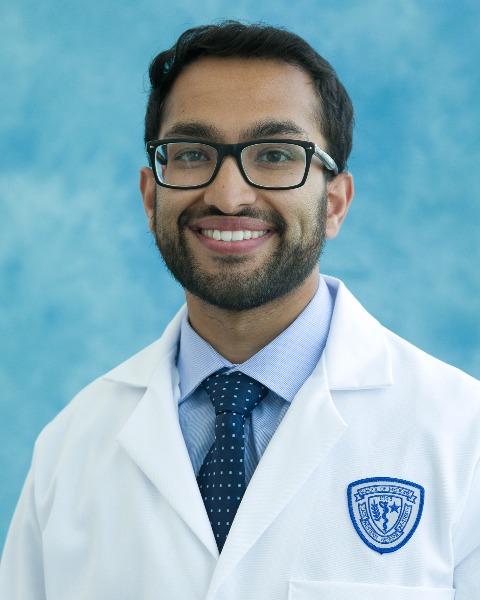Tumor
Prior Surgical Resection is a Predictor of Facial Nerve Function Decrement after Radiosurgery for Vestibular Schwannomas
Prior Surgical Resection Is a Predictor of Facial Nerve Function Decrement After Radiosurgery for Vestibular Schwannomas

Pranav Kumar, BA
Medical Student
Case Western Reserve University School of Medicine
Cleveland, OH, US
Presenting Author(s)
Introduction: Gamma Knife radiosurgery (GKRS) is a common treatment modality for vestibular schwannomas (VS) with strong tumor control rates and low rates of facial nerve palsy. Following surgical resection, GKRS can serve as adjunctive treatment for residual or recurrent tumor. However, it is poorly understood whether patients with prior surgery have a higher rate of post-GK facial palsy.
Methods: An institutional database of GKRS treating adult VS was queried for patients with >2 years of follow-up post-GKRS. Two cohorts were identified: patients receiving VS resection prior to GKRS and patients receiving only GKRS. Facial nerve function was graded with the House-Brackmann (HB) scale pre-GKRS and post-GKRS until last follow-up. Logistic regression was utilized to investigate the relationship between covariates and post-GKRS facial nerve function decrement.
Results: There were 37 patients in the surgery-GKRS cohort and 113 in the GKRS-only cohort. The surgery-GKRS cohort had a significantly lower average age (56.4 vs 63.8 years), higher tumor volume (2.62 vs 1.72 cm3), and higher proportion of right-sided VS (59.5% vs 37.2%). Facial nerve function worsened within 2 years post-GKRS in 7/37 (18.9%) of surgery-GKRS patients and 9/113 (8.0%) of GKRS-only patients. At last follow-up, facial nerve function worsened in 7/37 (18.9%) of surgery-GKRS patients and 6/113 (5.3%) of GKRS-only patients. Larger tumor volume and surgery-GKRS treatment were significant predictors of facial nerve function decrement post-GKRS at last follow-up (p=0.011 and p=0.016, respectively) and maintained significance in multivariate analysis (p=0.016 and p=0.026, respectively) controlling for sex, laterality, pre-GKRS HB score, and either tumor volume or treatment group.
Conclusion : Prior surgical resection may be an underestimated risk factor for new/worsened facial palsy following GKRS for adult VS, possibly due to less reserve in the nerve. We identified larger tumor volume as an independent predictor of facial nerve decrement regardless of prior surgical status.
Methods: An institutional database of GKRS treating adult VS was queried for patients with >2 years of follow-up post-GKRS. Two cohorts were identified: patients receiving VS resection prior to GKRS and patients receiving only GKRS. Facial nerve function was graded with the House-Brackmann (HB) scale pre-GKRS and post-GKRS until last follow-up. Logistic regression was utilized to investigate the relationship between covariates and post-GKRS facial nerve function decrement.
Results: There were 37 patients in the surgery-GKRS cohort and 113 in the GKRS-only cohort. The surgery-GKRS cohort had a significantly lower average age (56.4 vs 63.8 years), higher tumor volume (2.62 vs 1.72 cm3), and higher proportion of right-sided VS (59.5% vs 37.2%). Facial nerve function worsened within 2 years post-GKRS in 7/37 (18.9%) of surgery-GKRS patients and 9/113 (8.0%) of GKRS-only patients. At last follow-up, facial nerve function worsened in 7/37 (18.9%) of surgery-GKRS patients and 6/113 (5.3%) of GKRS-only patients. Larger tumor volume and surgery-GKRS treatment were significant predictors of facial nerve function decrement post-GKRS at last follow-up (p=0.011 and p=0.016, respectively) and maintained significance in multivariate analysis (p=0.016 and p=0.026, respectively) controlling for sex, laterality, pre-GKRS HB score, and either tumor volume or treatment group.
Conclusion : Prior surgical resection may be an underestimated risk factor for new/worsened facial palsy following GKRS for adult VS, possibly due to less reserve in the nerve. We identified larger tumor volume as an independent predictor of facial nerve decrement regardless of prior surgical status.

.jpg)